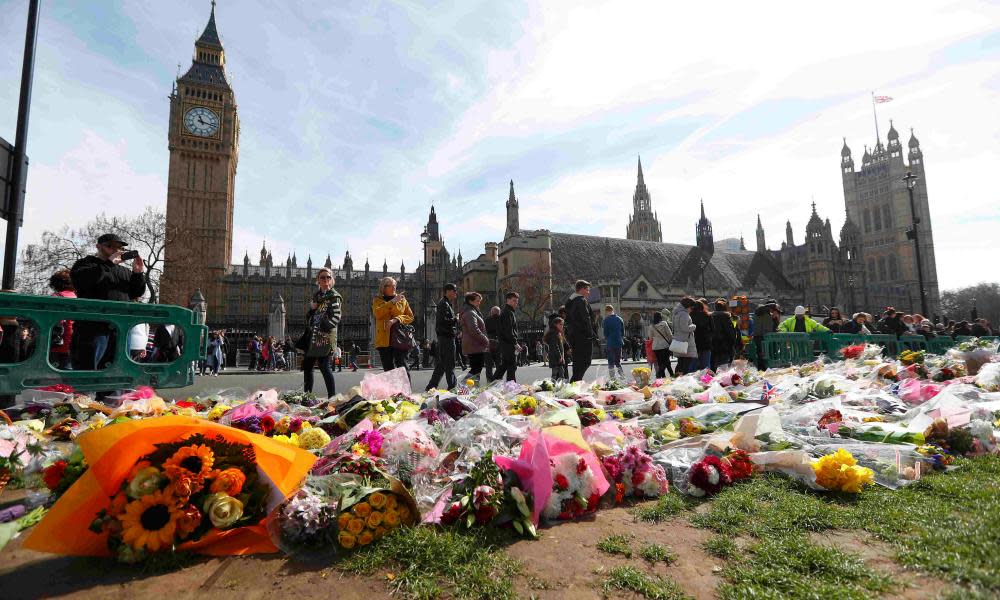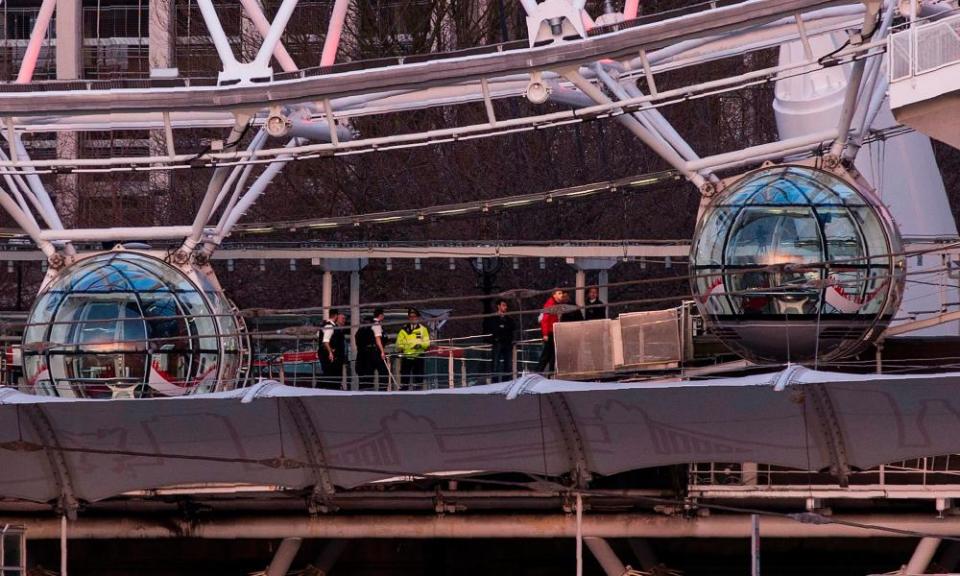We used to feel shielded at the Palace of Westminster. Suddenly all that changed

Those of us who work in the Palace of Westminster as journalists enjoy extraordinary privilege. We live, socialise and work with the politicians who run the country. We see them daily, in their different guises, not just from high above in the press gallery of the Commons chamber, but all the time in person, as colleagues or friends.
We wander the same corridors and cloisters. We stop to chat with MPs, peers, advisers, exchanging news and gossip. We, like them, are part of the palace, at democracy’s heart, and part of the system. We get together with ministers and MPs over lunch, coffee, tea or a drink. That is our job, and part of theirs.
We sometimes take for granted the police who observe our movements on every corner, check our passes at each point of entry, and risk their safety to guard us. We forget, too, that thousands of people stop every day and stare at us from outside the palace perimeter, many from Westminster Bridge, eager to glimpse the political inner sanctum that to us is just routine. We are shielded here, at the heart of power – safe, secure, fortunate, and insufficiently grateful.
One of the joys of showing visitors round the Houses of Parliament – a friend or family member – is that they remind us how special our world is. When they come to prime minister’s questions or enter the House of Lords with all its finery, they become wide-eyed with fascination, and leave, invariably, awestruck. They see politics and politicians, suddenly alive before their eyes, in a place with so much history and grandeur that it is difficult to absorb in one short visit. “Do you realise how lucky, how privileged you are?” is the response I encounter almost every time I escort an outsider around. The answer is partly yes. Of course we realise. But partly no, because it is so easy to forget. This is a place of work for MPs, peers, officials, palace staff, we journalists. It might be the centre of democracy but it is our normal. It is always like this.
Or at least it was. On Wednesday at 2.40pm, suddenly, horribly, we were no longer set apart, protected in our bubble and safe in our uniquely rarified workplace. Parliament had been violated. Those dreadful moments when everyone inside the palace realised they had become terror targets were, at first, impossible to compute. Politicians never like to look anything but composed. And nor do the police. But in those appalling minutes many wore looks of sheer horror.
I had just finished a lunch with a minister in a restaurant in Portcullis House – the modern part of the Commons – and was heading towards New Palace Yard to our offices in the press gallery under Big Ben.

At the bottom of the escalator, I saw several armed police officers and could not understand why they were shouting at people getting on behind me, from the top. Initially I thought it was a problem with the escalator itself. But the officers were gesticulating frantically, and shouting, “No, no… get out, get out, get off.” From the other direction, coming from New Palace Yard, a group of MPs, including Penny Mordaunt, a minister, and the Lib Dem leader Tim Farron rushed past and somebody screamed: “Shots are being fired, just get out, out, out!” We didn’t know then but we were underneath the section of road, at the end of Westminster Bridge, where the attacker had driven minutes before into dozens of passersby, and crashed his car into the railings, before pushing his way in and stabbing PC Keith Palmer, fatally.
Terrified, we escaped to Westminster underground station and headed to New Scotland Yard, just down the Embankment. Everyone was texting their families. The MPs were desperate to know their staff inside were safe. One MP among our fleeing group said over and over again that this was “just the beginning”. Opposite, on the other side of the Thames, the London Eye was halted mid-trip. Tourists were suspended, high above London, able to witness it all if they were not too petrified to do so. We, and they, were fortunate. We would find out later that a policeman and three passersby, including a mother going to pick up her children, had died.
Later, I walked two hours home because the roads were all jammed, not knowing the full details. I never thought I would suffer delayed shock. Why should that happen to someone who lost no one, and only saw a lot of people fearing for their lives and feared for his own for just a few seconds? I was wrong. People had died and many had been terribly injured, including so many young.
Next morning, when pictures of PC Palmer were on every TV screen and every front page, and it seemed impossible to avoid the images of horror, and 12 forensic officers crawled on hands and knees where the policeman had died below our offices, everything that 24 hours before had seemed safe and normal now felt terrifyingly disturbed and distorted and, worst of all, just appallingly sad.
Politicians never like to look anything but composed. And nor do the police. But many wore looks of sheer horror.

 Yahoo News
Yahoo News 
